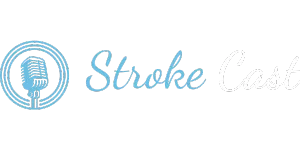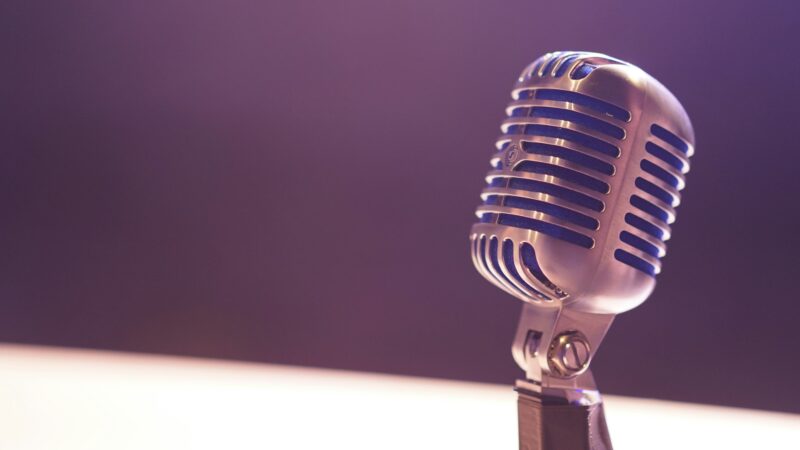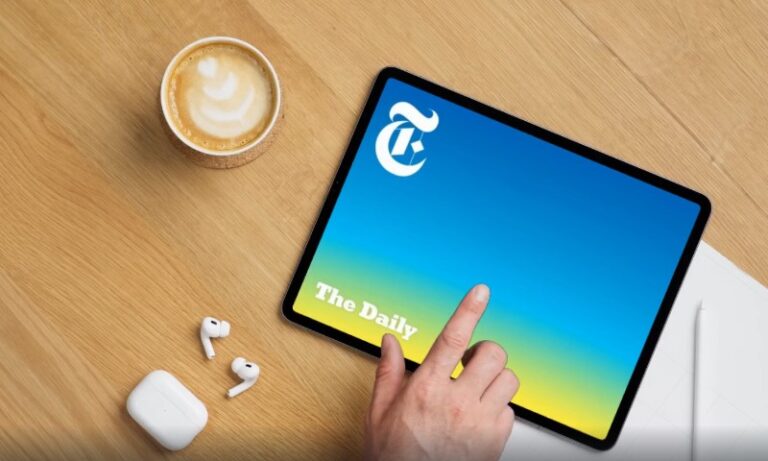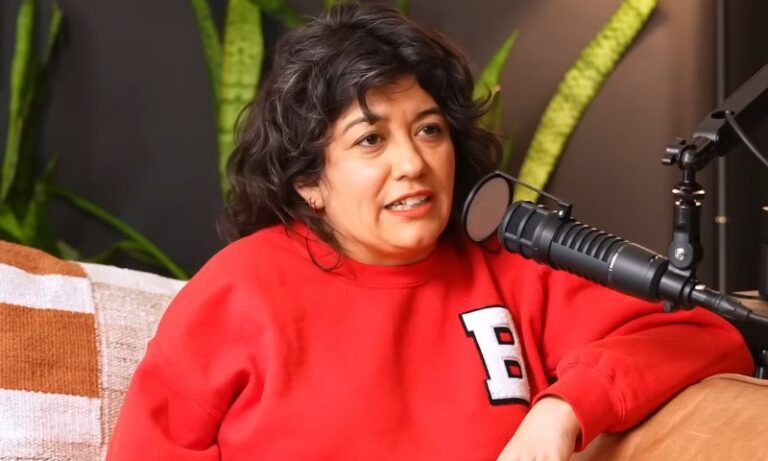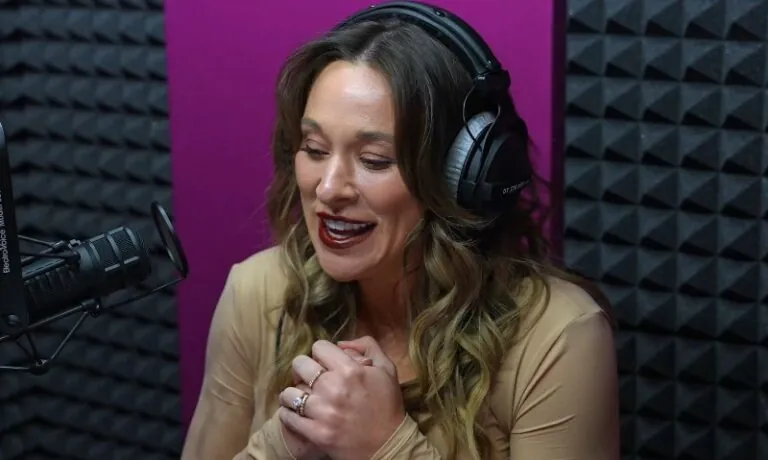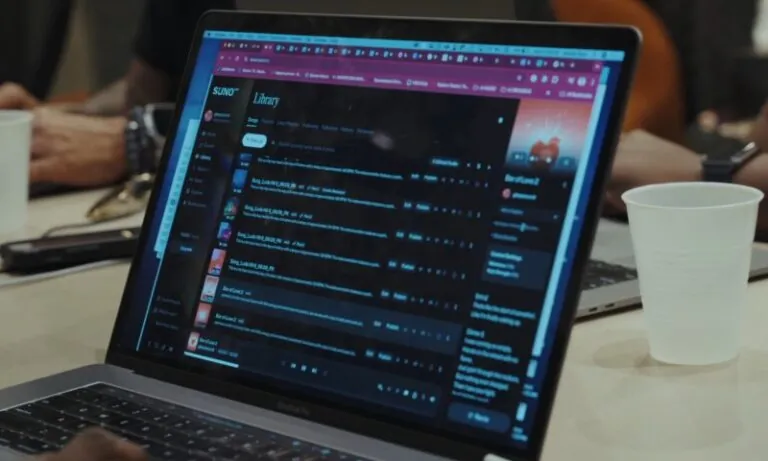So, you’ve decided to start a podcast. Kudos! You’re about to join the ranks of those who bring joy, knowledge, and a little bit of ranting to the ears of many.
Let’s get into how you can get your podcast rolling.
Table of Contents
ToggleDevelop a Podcast Concept
First off, let’s talk concept. You need to narrow down your niche and clarify your message. Why are you starting a podcast? If it’s just for fun with friends, cool. But you always need quality. Creating detailed to do lists for each episode can help you stay organized, ensure consistency, and keep your ideas on track as you build your show.
But maybe you have grander ambitions, like generating leads for a business or becoming an industry leader. Whatever the reason, be realistic about your goals. Most podcasters don’t shoot to fame overnight.
Tips for Defining Your Goals
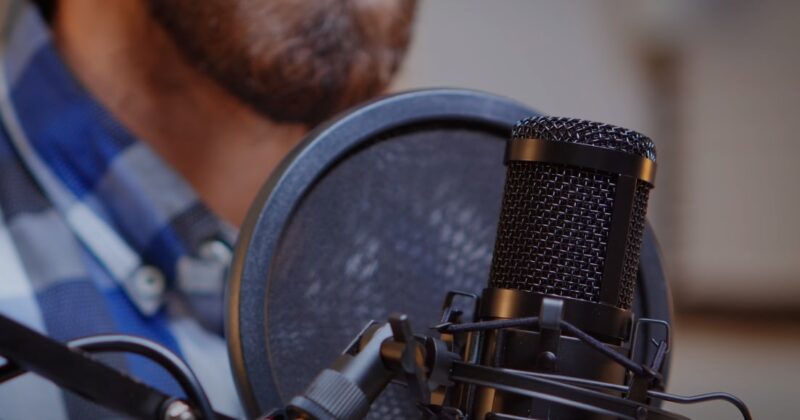
- Generate leads for a business
- Be recognized as an industry leader
- Share an important message
Next, you need a theme or topic that excites you. You’ll be talking about this a lot, so pick something you love. Do some market research, listen to other podcasts in your chosen genre, and figure out what unique angle you can bring to the table.
Once you’ve nailed down your niche, it’s time to name your podcast. Make it specific and memorable. Run potential names through a podcast name checker to ensure social media accounts and domains are available. Avoid using names that are already taken.
Also, don’t forget the thumbnail. Thumbnails are important for each episode. They should clearly display the title or key details. Use simple designs that are easy to read on any device. Thumbnails help listeners quickly identify episodes. Consistent ones make your podcast look professional.
Choose Your Podcast Format
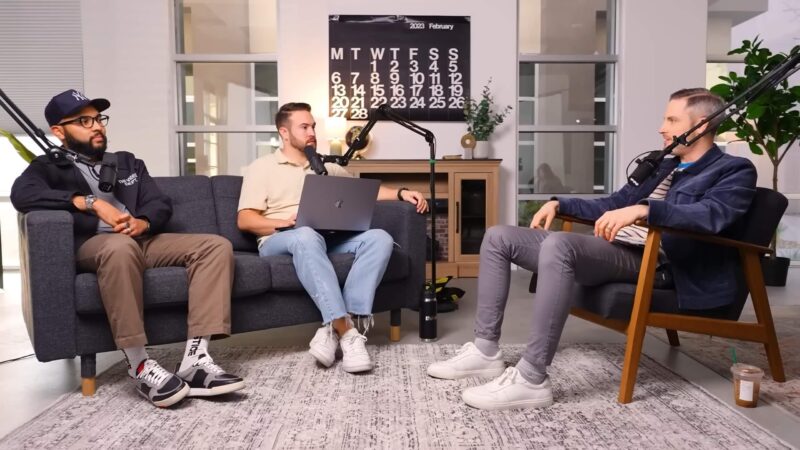
Now that you have your concept, let’s figure out the format. Your format should complement your style and be sustainable in the long run. Do you enjoy solo shows, or do you prefer bouncing ideas off a cohost? Maybe you like interviewing guests. There are various formats to consider:
- Interview podcasts
- Cohosted podcasts
- Scripted non-fiction
- News recap
- Educational podcasts
- Scripted fiction
Keep in mind that some formats require more production than others. For instance, fiction podcasts usually need more editing compared to interview podcasts.
Optimal podcast episode length: Make episodes as long as they need to be, and no longer. Common durations are:
- Less than 10 minutes (14%)
- 10—20 minutes (15%)
- 20—40 minutes (31%)
- 40—60 minutes (22%)
- Over 60 minutes (7%)
Podcast publishing schedule: Consistency is key. Whether you publish daily or once a month, stick to a schedule that works for you. Here are some common frequencies:
- 0—2 days (7%)
- 3—7 days (36%)
- 8—14 days (39%)
- 15—29 days (17%)
- Over 30 days (1%)
Set Up Podcast Recording Equipment
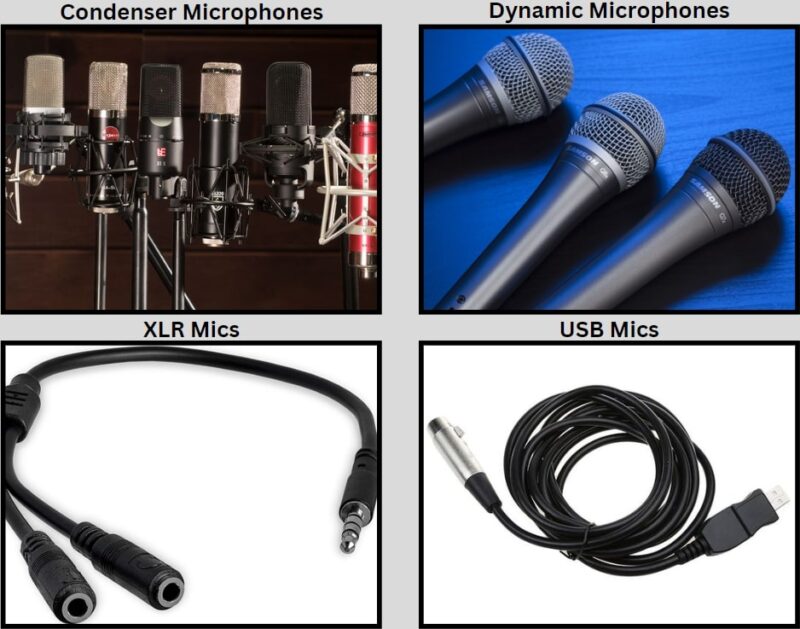
Good news! You don’t need to break the bank on equipment. A decent microphone goes a long way in improving audio quality.
Microphone types
- Dynamic microphones are great for podcasting as they pick up lower frequencies and reduce background noise.
- Condenser microphones are more sensitive and better suited for music recording.
Connection types
- XLR mics offer flexibility and longevity but require an interface or mixer, which can get pricey.
- USB mics are more affordable and plug directly into your computer, making them ideal for beginners.
My Top 3 Podcast Mic Recommendations
1. Shure MV7
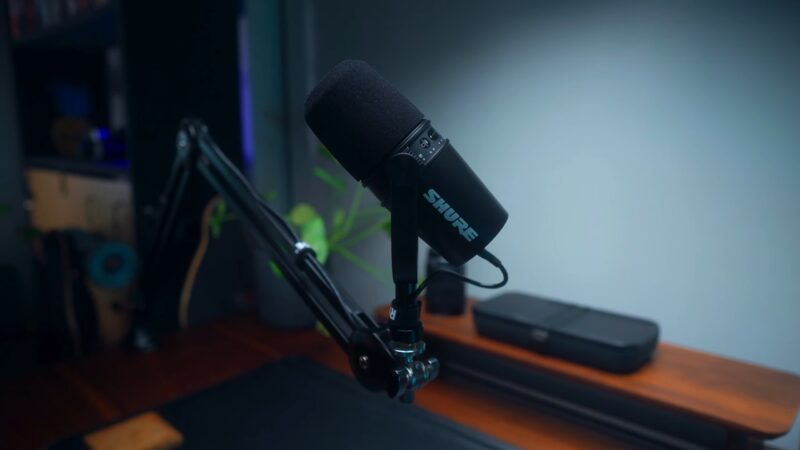
The Shure MV7 is a versatile, dynamic microphone that supports both USB and XLR connections, making it suitable for various recording setups. It’s inspired by the legendary Shure SM7B and offers excellent sound quality.
Features
- Dual USB/XLR output for flexible recording options
- Built-in headphone monitoring with touch panel controls
- Voice Isolation Technology to reduce background noise
- Customizable sound via the ShurePlus MOTIV app
Price: Approximately $249
2. Blue Microphones Yeti USB
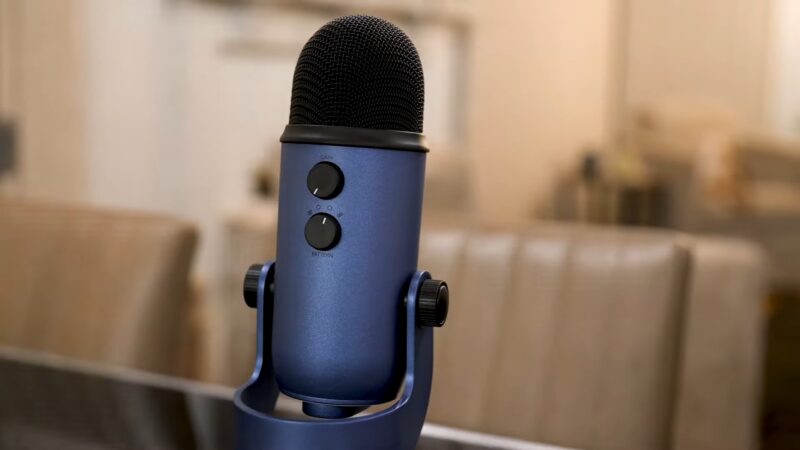
The Blue Yeti USB microphone is a popular choice among podcasters due to its ease of use and high-quality sound. It’s a condenser microphone that offers multiple pickup patterns for various recording situations.
Features
- Four pickup patterns: cardioid, bidirectional, omnidirectional, and stereo
- Built-in gain control, mute button, and headphone output
- Plug-and-play compatibility with both Mac and PC
- High-resolution 16-bit/48kHz audio recording
Price: Approximately $129
3. Audio-Technica ATR2100x-USB
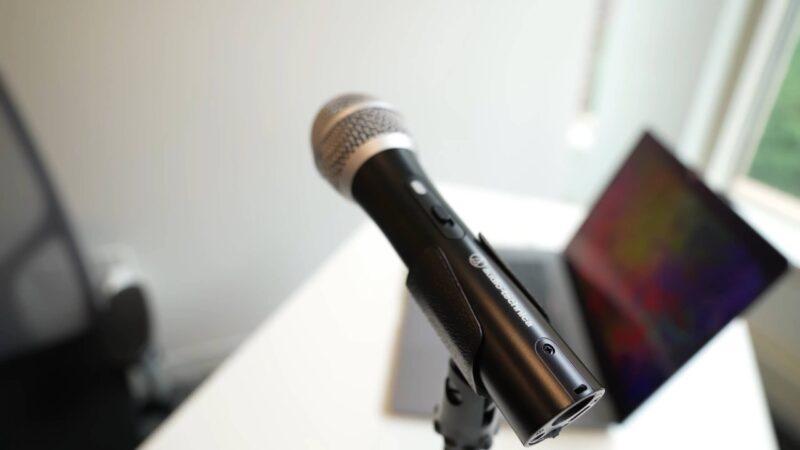
The Audio-Technica ATR2100x-USB is a budget-friendly dynamic microphone that provides both USB and XLR connectivity. It’s well-suited for podcasters looking for a versatile and durable mic.
Features
- Dual USB/XLR output for flexibility in recording
- Built-in headphone jack with volume control for direct monitoring
- Sturdy metal construction for durability
- Cardioid polar pattern reduces unwanted noise
Price: Approximately $99
Choose Your Podcast Software
Once you’ve recorded your audio, it’s time to edit. Here are some software options:
My Recording Software Recommendations
1. Riverside.fm
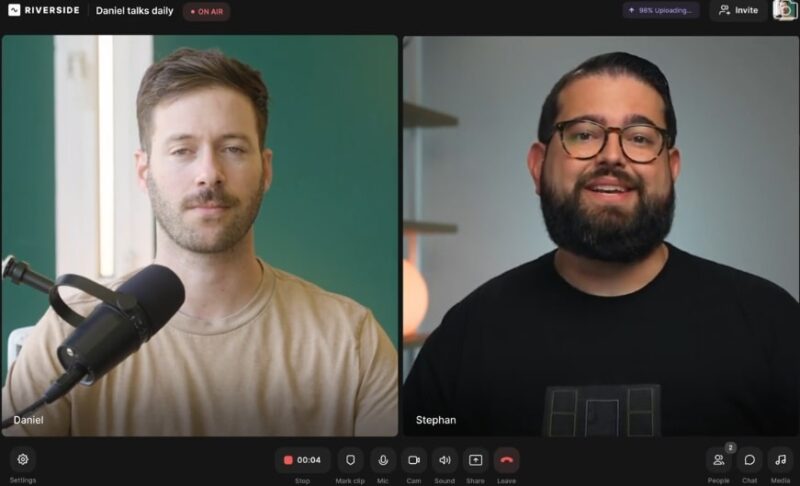
Riverside.fm is an awesome recording studio that allows you to record podcasts and videos in studio quality from anywhere.
It supports up to 4K video and WAV audio recording, making it a more than viable choice.
Features
- Studio-quality audio and video recording (up to 4K video and WAV audio).
- Separate tracks for each participant.
- Automatic upload of recordings.
- Live streaming capabilities.
- Mobile app support.
- Customizable studio design.
Pricing
- Free plan: Access to unlimited hours of high-quality audio and video recording, editing features, and separate tracks for up to 2 hours of recording.
- Standard plan: $15/month (billed annually at $180).
- Pro plan: $24/month (billed annually at $288).
2. SquadCast
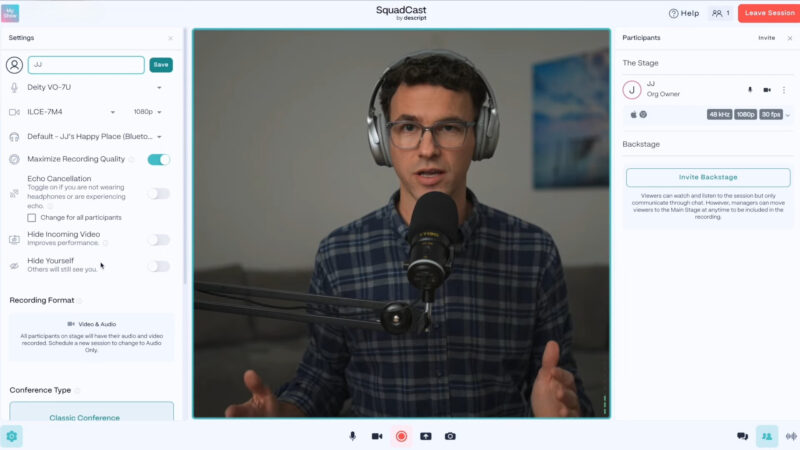
SquadCast is a cloud-based remote recording studio that ensures high-quality audio and video content creation.
It is designed for podcasters, video creators, and professionals who need reliable, high-quality recordings.
Features
- High-quality audio recording at 48 kHz.
- Video recording at 1080p.
- Local recording with automatic cloud backup.
- Separate tracks for each participant.
- Browser-based platform, no need for downloads.
- Integration with popular podcast hosting and editing platforms.
Pricing
- Free plan: Basic access for individual users.
- Pro plan: $12/month per user.
- Premium plan: $19/month per user.
- Enterprise plan: $26/month per user.
3. Zoom
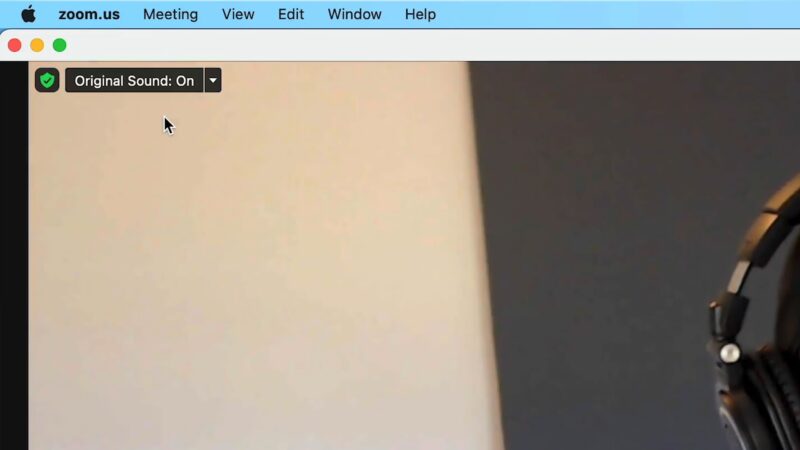
Zoom is a popular video conferencing tool that also offers robust recording features.
It is widely used for virtual meetings, webinars, and remote collaboration, with a variety of plans to suit different needs.
Of course, for podcasts, it can absolutely do the trick.
Features
- High-definition video and audio meetings.
- Cloud and local recording.
- Transcripts and automated recording management.
- Screen sharing and annotation tools.
- Breakout rooms for smaller group discussions.
- Integration with calendar services and third-party apps.
Pricing
- Free plan: 40-minute limit on group meetings, unlimited 1:1 meetings.
- Pro plan: $14.99/month per license, includes 30-hour meeting limit and 1 GB of cloud recording.
- Business plan: $19.99/month per license, includes additional features like company branding and admin dashboard.
- Enterprise plan: Custom pricing for advanced features and support.
My Editing Software Recommendations
1. GarageBand
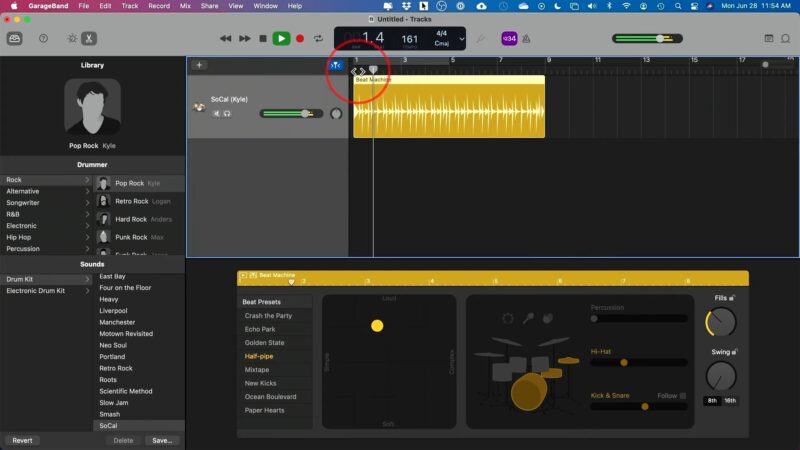
GarageBand is a fully equipped music creation studio for Mac, offering a complete sound library with instruments, presets for guitar, voice, and drummers, and a wide selection of session drummers and percussionists.
Features
- Built-in music lessons.
- Drummer feature with various styles.
- Over 100 EDM and Hip Hop synth sounds.
- Built-in recording and editing tools.
- Integration with Logic Remote.
Price: Free
2. Audacity
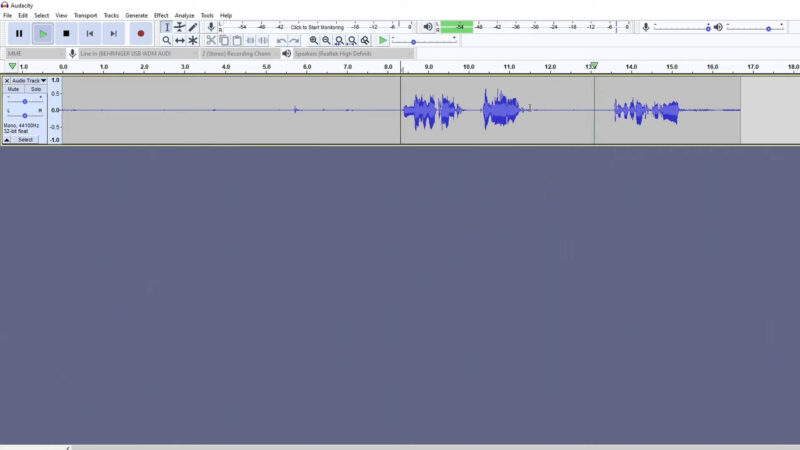
Audacity is an open-source, cross-platform audio editing software designed to record and edit sounds. It is free and used by professionals and hobbyists alike. What should be known is that you can also use the software to record the sounds produced by your bass guitar strings, not just vocals.
Features
- Multi-track editing.
- Audio recording from various sources.
- Editing tools including cut, copy, paste, and delete.
- Effects such as normalization, equalization, and compression.
- Support for various plugins.
Price: Free
3. Descript
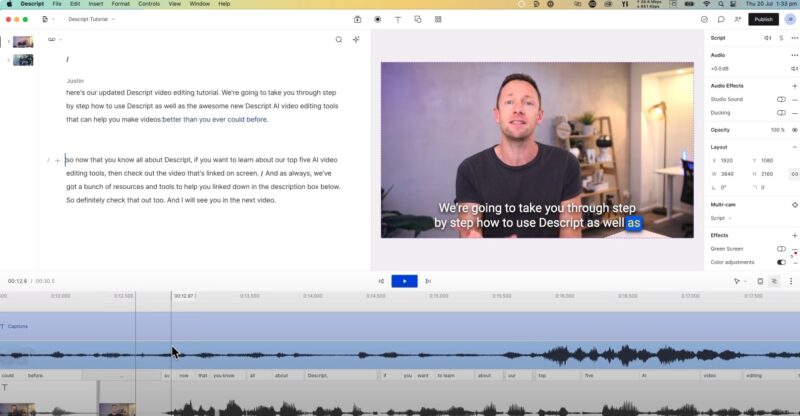
Descript is an AI-powered audio and video editor that simplifies editing by allowing users to edit recordings like a text document.
Features
- Text-based editing.
- Multi-track editing.
- Automatic transcription.
- Screen recording and publishing tools.
- Overdub for voice synthesis.
Price: Free plan: $0, Creator plan: $12/month, Pro plan: $24/month
4. Hindenburg Pro
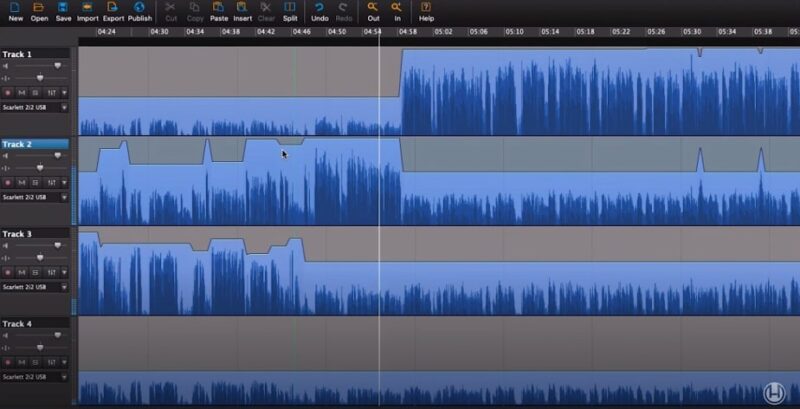
Hindenburg Pro is a professional-grade audio editing software designed for broadcast journalists, podcasters, and audiobook narrators.
Features
- Multi-track recording.
- Automated levels for consistent volume.
- Clipboard manager for easy sound bites.
- Voice profiler for optimal voice quality.
- Built-in publishing options.
Price: Subscription-based, with the Standard tier starting at around $12/month
Record Your First Episode
Recording your episode involves a bit of prep. Here’s how to get started:
- Write a podcast outline: Avoid rambling by jotting down bullet points. Share it with any cohosts to keep everyone on track.
- Pick a good place to record: A quiet room with lots of furniture, curtains, rugs, or carpet works best. Eliminate hard, flat surfaces to reduce noise.
- Set up your recording equipment and software: Connect your mic to your computer or audio recording device. Adjust your settings to select your audio input.
Microphone technique: Position your mouth 2″ to 4″ away from the mic for the cleanest sound. If you notice plosives or sibilance, move off-axis slightly.
Record a test track: Talk at a consistent volume from different positions and listen to the playback to find the best sound quality. Don’t stress about mistakes; you can edit them out later.
Edit Your Audio
Editing is about cleaning up the audio and structuring your episode. Keep it simple to avoid overwhelm. Once you’re done, export your audio as a .WAV file. Platforms for podcast will handle ID3 tags and file conversion for you.
Create Podcast Artwork
Your podcast cover art is the first thing potential listeners will see. Good artwork implies quality content, so make it count. Aim for something eye-catching and professional, as 62% of new listeners are more likely to tune in if they like the cover art.
Tips for Creating Artwork
- Define Your Visual Identity: Ensure that your artwork reflects the theme and tone of your podcast. Consistency with your brand is key.
- Meet Platform Requirements: Different platforms like Apple Podcasts have specific requirements for cover art dimensions and formats. Make sure your artwork complies.
- Design for Various Sizes: Your artwork should look good both as a tiny thumbnail and a large image. Test it in different sizes to ensure clarity.
- Keep it Simple and Clean: Avoid clutter and busy backgrounds. A simple, clean design with relevant imagery is often more effective.
- Choose Fonts Carefully: Use legible fonts that reflect your podcast’s style. The text should be readable even at smaller sizes.
- Use Color to Your Advantage: Select colors that stand out and evoke the right emotions. Consider the psychology of colors in design.
- Tell a Story: Use your cover art to convey the core theme of your podcast. Consider hiring a designer if necessary to get this right.
- Include Social Proof: If you have notable guests or accolades, consider subtly including these in your artwork.
- Adaptability: Make sure your artwork can be easily adapted for different uses, such as social media promotion and merchandise.
- Optimize for Mobile Users: Many listeners will discover your podcast on mobile devices, so ensure your artwork looks good on smaller screens.
You’re All Set Now!
And there you have it, people. The essentials of starting a podcast in 2025. Now, go ahead and create something amazing!
Related Posts:
- The Ultimate Beginner’s Guide to Starting a Podcast…
- 10 Fitness Tips from the Fresh and Fit Podcast -…
- Step-by-Step Guide to Building a Podcast Studio at…
- The Complete Beginner’s Guide to Kick Streaming -…
- How to Prepare for Your First Red Carpet Interview -…
- 12 Innovative Podcast Ideas to Launch in 2025
